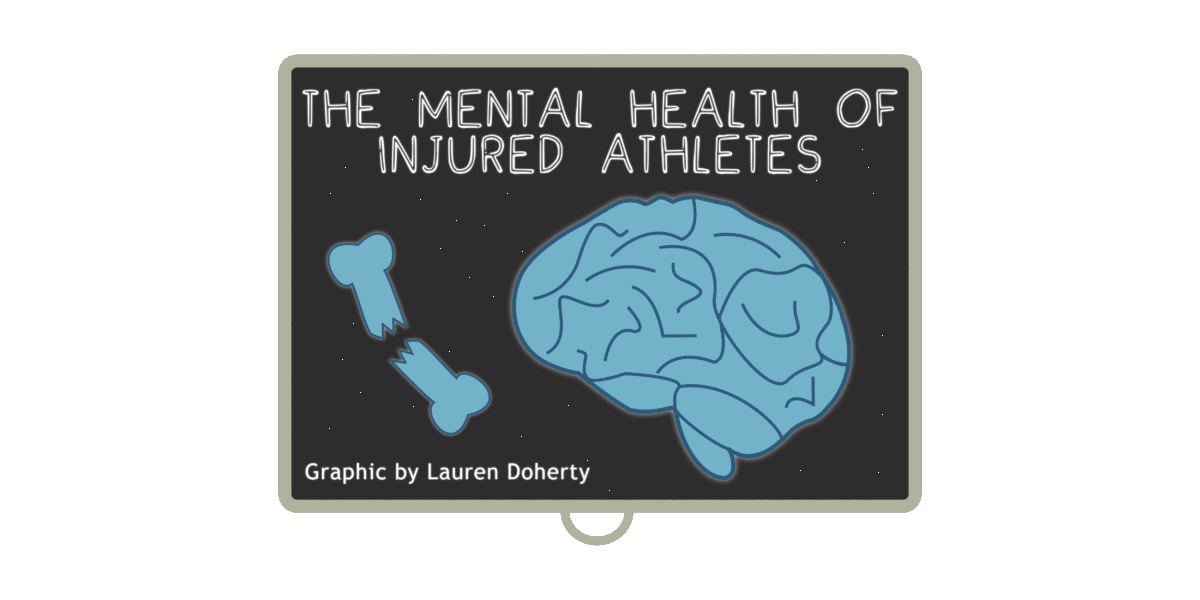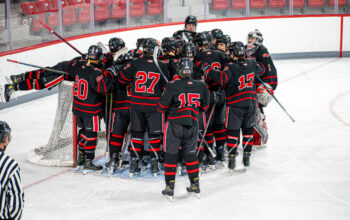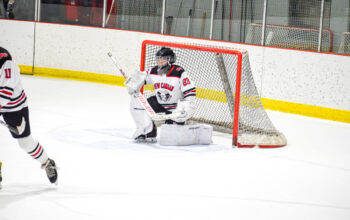Lauren Doherty, Editor-in-Chief
@ldohertycourant
Whether it’s battling for a state title on the cross country course or scoring the winning goal during a soccer game, the pressure is on high school athletes to perform at extremely high levels. Many athletes thrive with this sort of competition, their hunger for success propelling them to all-state or even all-American status.
But with just a simple wrong landing in ballet or a heavy tackle on the football field, the walls athletes worked so hard to build can come crashing down. An injury can set an athlete’s body back weeks or even months, but it can hinder their mindset forever.
Trainers Diane Murphy-Kivell and Corey Dybas work with injured athletes daily in the training room, located on the first floor adjacent to the fitness center. “We treat a wide variety of injuries, coming from minor strains and sprains to fractures, dislocations, and torn ACL’s,” Corey said.
Often, it is the repetitive motions of a sport that can lead to injuries. Baseball pitchers can injure their shoulders from throwing, long distance runners can develop stress fractures in their legs, lacrosse players can injure their backs from constantly taking ground balls. “If you have that high school athlete who is sinking everything they can into one sport, the repetitive motions can predispose them to an injury,” Diane said.
Junior Caitlin Tully, a talented lacrosse and ice hockey player, tore her ACL (Anterior Cruciate Ligament), MCL (Medial Collateral Ligament), and meniscus during the fall of her sophomore year. After having surgery in December, Caitlin was sidelined for about a year. She didn’t miss much of her lacrosse season, due to the COVID outbreak, but she missed a whole ice hockey season.
Caitlin described the injury as occurring in slow motion, only to realize that she couldn’t even stand up. “I just immediately broke down into tears, because I knew I was going to be out for so long,” Caitlin said. “In that moment everything had come crashing down.”
Many athletes feel a similar way. This fear that the world has come “crashing down” can be incredibly overwhelming. When ignored, it can result in extreme nervousness for athletes as they return to the field. Oftentimes, athletes fear reinjury, which can make them over-cautious when playing, stalling their potential. Non-contact injuries, such as ACL tears, are typically the most difficult to mentally overcome.
Senior basketball player Will Bozzella struggled with injuries to his MPFL (Medial Patellofemoral Ligament). In his sophomore year, he partially tore it and missed the middle third of his season. Then, in the second practice of his junior year, he completely tore it. “If you play tentative and nervously over the fear of reinjury, your body really starts to compensate in unhealthy ways,” Will said.
Trust was key for Will as he battled his way back to the basketball court. “In order to really overcome my injury, especially because I had failed to overcome that injury a year before, it took a ton of trust,” Will said. “I had to trust myself and the quality time I put into recovery.”
For some athletes, injuries provide them with the motivation to improve upon themselves. Corey, who worked with Division 1 athletes during his time at Sacred Heart University, found that athletes can greatly improve post-injury. “There are athletes out there who will have more motivation following an injury to excel and take better care of their bodies than they had before that injury,” Corey said. “They come back stronger and play phenomenal.”
Kim Palmer, who coaches girls basketball, has found that preparation is key when aiming for a successful injury recovery, both mentally and physically. “Preperation builds confidence, just like when you prepare for a test in school,” she said. “If you are prepared you feel less stressed and more confident, it’s the same mindset for sports.”
Luckily for Caitlin, she was able to shift her mindset, focusing purely on her recovery and improvement as an athlete, finally accepting that there were certain factors that she couldn’t control. “I had to shape my mind and realize that I can either grow from this and make it a learning experience, or I can feel sorry for myself and never get over it,” Caitlin said.
Caitlin, now recruited to Cornell University for lacrosse, had her season torn away from her at the peak of the college recruiting process. “Even if I couldn’t necessarily run or dodge yet, whatever I could film I was trying to send to colleges to show how hard I’d been working to try and overcome this,” she said. “I wanted to show that I’m going to be an even stronger player coming out of this injury.”
But an injury is never just the injury. There are countless outside factors. Whether it be family life, schoolwork, social pressures, or other variables in the average student-athlete life, all can greatly impact one’s ability to recover. “It’s environmental,” Diane said. “We’ve seen kids just curl up in a ball, they just shut down.”
There are three key points to take into consideration when developing a recovery plan for an athlete: biological, psychological, and social. An athlete cannot solely focus on one or the other. Improving biologically but not psychologically or socially will limit an athlete’s performance. There would be a lack of confidence, a lack of communication with teammates, and overall a less comfortable environment for the athlete.
When athletes choose to focus solely on their biological recovery they are often faced with the reality that they can’t reach their level of pre-injury fitness. This realization can cause athletes to feel extremely anxious over their future in the sport, especially if they plan for college careers. “I’ve seen a lot of stress lately,” Diane said. “Athletes just overwhelmed, stressed, and panicked.”
Empathy is the word Corey punctuates when addressing an athlete’s recovery. “Understanding and relating to what athletes are going through, being able to show that, let’s them know that they are not alone in this process,” he said.
Luckily, New Canaan athletes aren’t the first to tear their ACL or break a bone. There is a network of both professional athletes and peers to look up to for guidance. When referring to her injury, Caitlin said she relied on a friend who has recently been through a similar experience. “It was nice to have people who have been through this before guiding you along the way and encouraging you to keep going and fighting through it,” said Caitlin.
For Will, it was vital to keep his mindset focused on reality. “High school, and life for that matter, are much too short to be demoralized over a physical injury, especially one that you can overcome,” he said. “It took me a while to learn that.”
Recovery is just like winning a game: it’s a team effort. “We never want someone to feel like they are alone,” Diane said. “It takes the parents, siblings, friends, teammates, coaches, and everyone to really rally around them.”
For coaches, the key steps can be summed up in just two words. “Commitment and communication!” Coach Palmer said. “Athletes and coaches have to be on the same page.”
Physical injuries can be taped up, operated on, or strapped in a cast, but that of the mind isn’t quite as easily solved. On writing, it can seem as easy as flipping a switch to bandage the mind. But, at the end of the day there’s no formula, no one-way street that will improve athletes’ mindset. Mental health is an ongoing journey — one that through focus, strength, and a constant support system, can be improved upon, allowing athletes to reach their maximum potential.




